RN Fairey Firefly, Lochnagar, crash date 16/05/49

[Picture from wikipedia.org]Google Maps display showing wreckage locations This air wreck site is one of the most interesting in the Scottish mountains. Almost all of the Firefly which crashed on the slopes of Lochnagar in 1949 remains near the initial crash site, and large pieces of readily identifiable wreckage are present with RN markings and yellow painted livery denoting the trainer role of this particular Firefly.
The wreckage is scattered very widely. The main impact point is a hollow full of burned remains amongst boulderfields on the eastern slopes of Cuidhe Crom at an altitude of about 920m, about 2½km south-east of the summit of Lochnagar. At this site are the the two wings from the Firefly and the engine block (first three photos below). One of these wings is easily visible from the main path to Lochnagar from Glen Muick over 2km to the east, due to its yellow painted livery. This wing still has a painted Fleet Air Arm roundel visible on it. The Rolls-Royce Griffon engine (with its distinctive V12 shape) sits at a prominent spot at the main site with excellent views eastwards towards Conachraig (4th and 5th photos below).
Further large pieces of wreckage, including one of the undercarriage legs (8th photo below), the propellor reduction gearing mechanism (6th photo below), and the supercharger/carburettor from the engine (10th photo below; see a diagram of the Griffon engine here), lie eastwards downslope below this site, with the tailplane section lying at the furthest point from the main site, about 600m away at an altitude of about 760m (12th photo below).
One mystery about this site are two large pieces of fuselage, lying together about 500m downslope and north-east of the main impact site, away from the main line of debris (13th and 14th photos below). These two pieces of wreckage still show the Firefly's serial number and the words 'Royal Navy' are clearly visible. One piece has a Fleet Air Arm roundel on it also.
The mystery is that AWWG describes one of these pieces of fuselage as being at the main impact site, and a photo on the NBSAB website shows this fuselage section (easily identifiable due to the markings) next to one of the wings at the main site. A photo of this piece of fuselage on the TFDACSS website taken in 2002 appears to show it in its current location, so it seems that at some point in the years before this it has been moved to a point about 500m downslope to the north-east, by persons unknown. This, and the mystery surrounding the remaining pieces of wreckage at the Wellington site near Ben Tirran (see here) show that a considerable amount of tampering has been done to air wreck sites over the years, even those in remote locations at high altitude in the Scottish mountains, so no real conclusions can be drawn about these aircraft crashes from the current condition and location of any remaining pieces of wreckage.
The TFDACSS website has some pictures of the site here. The NBSAB website has some pictures of the site here.
These pictures were taken in August 2009.
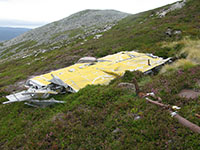 |
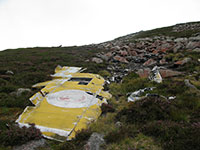 |
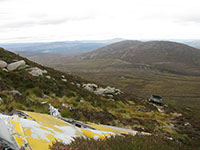 |
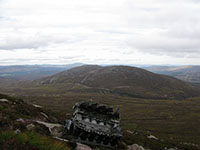 |
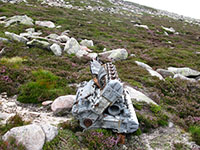 |
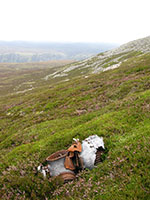 |
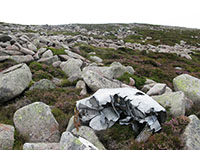 |
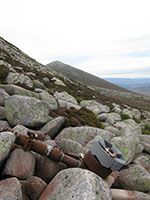 |
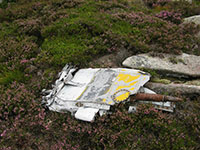 |
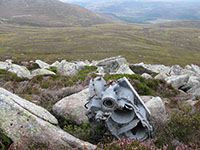 |
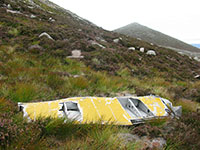 |
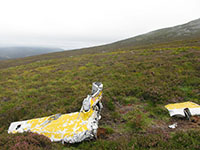 |
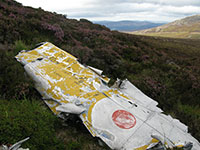 |
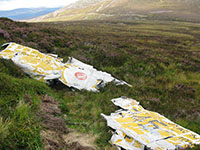 |